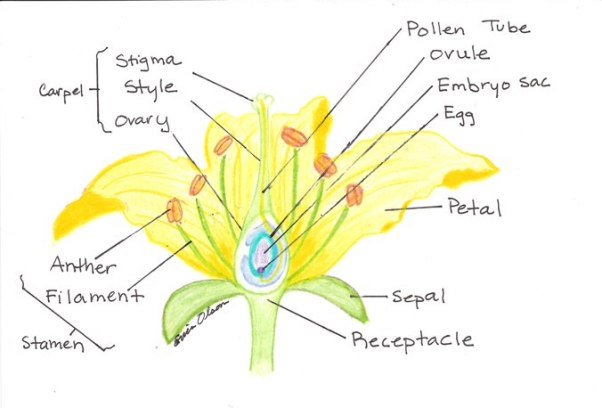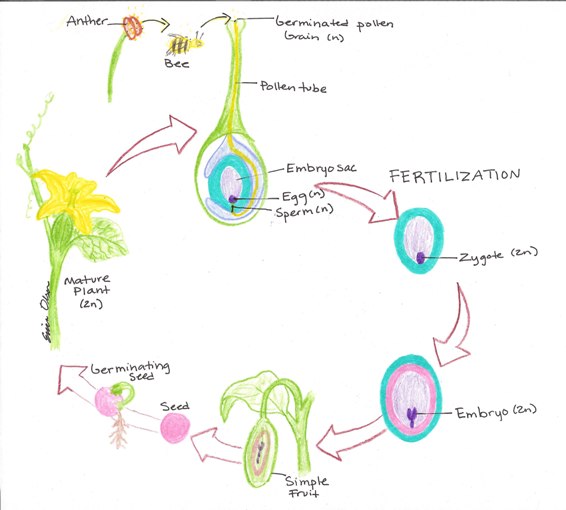Cucumis sativus
Life Cycl
eBefore we are able to talk about the life cycle of the angiospem, we must first understand its structure of its flower. Below is an image depicting a one type of monoecious flower (containing both male and female reproductive structures within one flower).
 The
structures included are the sepal,
petals, stamens and carpels all attached
to the receptacle, a portion of the
stem. The stamens are the male
reproductive organs and the carpels are
the females. The sepals are
responsible for protecting the floral
bud before it opens by enclosing it.
The petals bright colors are used to
attract pollinators, bees in the case of
the cucumber, although other pollinators
include humming birds and
butterflies. The stamen
consists of the anther and the filament.
The anther are the structures that
produce pollen. The carpel
consists of the ovary, the style and
stigma. The stigma is the
structure that receives the pollen and
carries it down the pollen tube to the
ovary. Like the flower above, the
cucumbers flowers are also
monoeicious, but because both male and
female flowers are on the same plant.
The
structures included are the sepal,
petals, stamens and carpels all attached
to the receptacle, a portion of the
stem. The stamens are the male
reproductive organs and the carpels are
the females. The sepals are
responsible for protecting the floral
bud before it opens by enclosing it.
The petals bright colors are used to
attract pollinators, bees in the case of
the cucumber, although other pollinators
include humming birds and
butterflies. The stamen
consists of the anther and the filament.
The anther are the structures that
produce pollen. The carpel
consists of the ovary, the style and
stigma. The stigma is the
structure that receives the pollen and
carries it down the pollen tube to the
ovary. Like the flower above, the
cucumbers flowers are also
monoeicious, but because both male and
female flowers are on the same plant.

Unique to
the angiospem life cycle is the
formation of fruit. Seen below is
an image of how the female flower,
fertilized by the pollen on the bee from
the male flower, is able to produce a
cucumber. Observe that the egg,
which is haploid(n) is fertilized by the
sperm with is also haploid(n) combine to
form a diploid(2n) zygote. The final
result is the formation of the ovary
protecting the seeds which is the fruit
that we eat.

To learn
more about interactions with other
organisms click
here.
Copyright © 2007, Design by: Sunlight webdesign